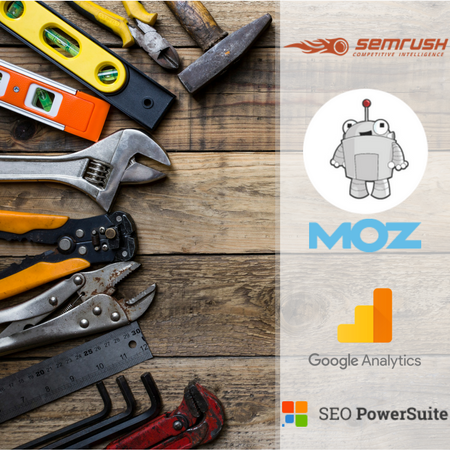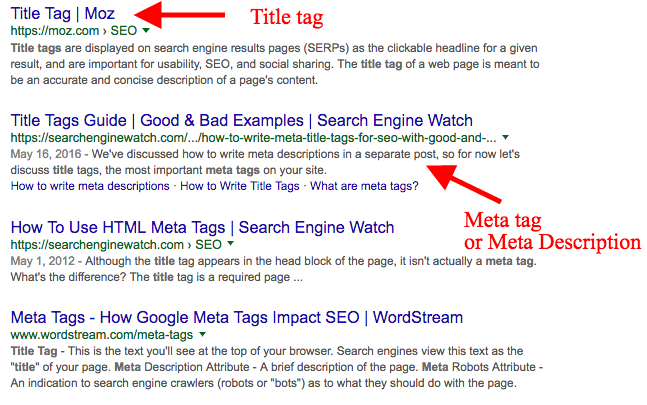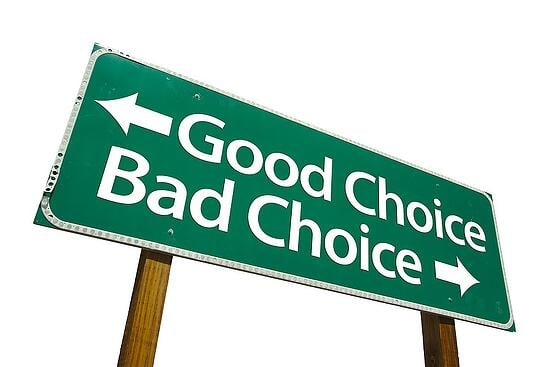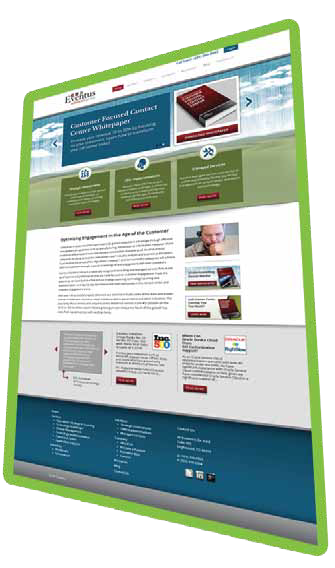Table of Contents
About the Author

Juliette Tholey is an SEO Strategist at Revenue River in Denver. Juliette uses a wide variety of tools that are vital to the success of her SEO campaigns. With these tools, she can provide the best suggestions for keywords, metadata, and overall search strategy and implementation to help organic search rankings.
What is Search Engine Optimization?
“Search engine optimization (SEO) is the process of affecting the visibility of a website or a web page in a search engine’s natural or un-paid (organic) search results.” -Wikipedia
Search engine optimization is a term that gets thrown around a lot in online marketing these days, but for the average business owner, it can be very confusing to understand what it is and how it works. With so many mandates about how to build an online presence, how do you have time to incorporate SEO into your online strategy, while still maintaining the day-to-day responsibilities of your business?
SEO is the process of helping your website rise in rank on Google and other search engines, therefore getting your site in front of more people, increasing business and making you an industry leader. It is extremely important that you have a solid strategic plan before you dive in. It is good to rank for keywords, but it also important, maybe even more so, to make sure you are reaching your users
It is extremely important to understand that SEO isn't something that you can take a half-assed approach to; you must have a solid strategic plan before you dive in. It is good to rank for keywords, but it also important to make sure you reach your users

Understanding Ranking Factors
So you want to step up your SEO game? All the positives sound great, but how do you even get started? Before developing your SEO strategy, you need to understand what type of information goes into the algorithm for search engine rankings.
These include:
- Website Usability
- On-page Optimization
- Off-page Optimization
Your search engine rank is the position that your website physically falls in Google's or Yahoo's search results when a specific search query is entered. If you are the first website in a string of search results, then your rank is 1.
Your rank is an indicator of how relevant and authoritative your website is in the eyes of the search engine, as it relates to the search query entered.
Pro tip: Don't be confused by the paid ads at the top (indicated as Ads) as those companies and websites paid to be at the front of those search results. Those paid advertisements don't fall under the SEO umbrella. Instead, they are associated with pay-per-click (or commonly referred as PPC.)
see a list of all current ranking factors by Search Metrics
Search engines are very complex, and you won’t understand all the smaller details or nuances of SEO right away. That being said, as you learn more about the way your site is ranked and track your progress, you will see real results on Google and can adapt your methods.
From reading the remainder of this article, you'll learn the basics of search engine optimization, and how to create an effective SEO strategy by following Google’s algorithm guidelines and understanding the ranking factors for success.
The first step to creating an SEO strategy is to understand what keywords you're going to rank for.
Discover Your Keywords & Pillar Pages
The first step in the overall SEO process is to create a good pillar strategy with high-quality keywords. Very recently, an SEO industry expert, Rand Fishkin, described a new groundbreaking SEO strategy. This new strategy is called a "pillar page strategy" or "10x content" and it aims to make your content work 10 times as hard.
Pillar pages are the pages on your website that you want to generate the most traffic and are often the pages that have the best analytics. That means that they could have the following KPIs:
- high traffic levels
- a high amount of time spent on page
- a low bounce rate
- a high click-through-rate
It can be a long, lengthy process to create a pillar page strategy that your company needs, but we've put together a 5-step guide that will help any beginner understand what pillar pages and keywords are the most effective for your company, firm, or business.
Pro Tip: Before you begin, make sure you are ready to keep track of all your findings and make sure you have a Google AdWords account set up.
Step 1: Choose Your Pillar Pages
Put yourself in the shoes of your ideal client. What would you search for if you needed the products, services, or processes that your company offers?
Now, think of the pages that your client base would use the most. There really isn't a limit to the number of high-impact pages that you can use here, but be careful not to go overboard. You don't want to create a pillar page strategy that is beyond your company's capacity. However, if you need to create a 10+ pillar page strategy, and you have the resources needed to accomplish that task, go for it!
Pro tip: If you're using your pillar page strategy in conjunction with your blogging efforts, you'll need to create topics for each pillar page that you're creating.

Step 2: Determine Your Keywords
Evaluate the keywords that your company is using. Where does your website rank for those terms? Are your competitors ranking for keywords that you're not considering? Really do your research here. The better your keywords are, the more traffic you'll be able to receive from Google.
The objective here is to gather as many keywords as you deem necessary. We'll evaluate whether or not these keywords are the ones that you should be ranking for in the next step.
Pro tip: If you hit a roadblock coming up with keywords, go ahead and move ahead to Step 3. Evaluating the keywords that you came up with will help you finalize them.
Step 3: Utilize SEO Tools
Now that you have an idea of what your keywords are, you need to confirm that your keywords are correct, and to get suggestions on additional keywords to add. There are many SEO tools out there that can help you here, and we've listed a few here.
 |
Free SEO Tools: Paid SEO Tools: |
These tools are all fairly comprehensive, but they will take some time to master. Take the time to read their blogs, and get yourself accustomed to the tools' usage. If you have questions that you can't find answers to, contact the support team of the tool that you're using.
Step 4: Check Your Rankings
While you are going through step 3, make sure you are denoting what page you're ranking on or what rank you are on the SERPS. If you see your company's URL, make a note of what rank you are. If you don't make these notes now, then you'll have no determinant of whether or not your company is growing or falling in search engine rankings.
If you have gone through 50 or 100 search results and still do not see your site, just stop there and make a note of it in your spreadsheet (i.e. 50+ and 100+).

Step 5: Making Decisions
Now that you have done your research and have a better understanding of your keywords, it is time to evaluate which keywords are the best 3-5 keywords per pillar page. By doing this, you'll ensure your SEO strategy is far more focused. Instead of a shotgun approach with keywords, pillar pages allow you to focus more on the specific pages you're attempting to rank for.
If you understand your pillar pages, your keywords, and if they've been properly researched, you'll get a head start on creating an effective SEO strategy.
Need More Help with Pillar Pages & Topic Clusters?
Our SEO experts, Jake Fox and Juliette Tholey, join forces to explain pillar pages and how to create them. Watch the video to learn more!
User Friendly Website
Each year, Google gets better and better at determining how user-friendly a website is. They can tell this by evaluating your website's bounce rates,
Knowing this, you can make your website more user-friendly by making sure a visitor stays on your site, visits more than one page, and regularly comes back to your website to read your content.
Below are some strategies that you can use to enhance how people use your website:
- Make sure the objective of your website is clearly communicated, especially on the home page.
- Make calls-to-action (CTAs) that tells users what to do next on your site.
- Ensure all potential questions and uncertainties are answered on your site.
- Navigation must be prominent and make it easy to find other pages and information.
- Break up big chunks of text so visitors do not get lost in words.
- Use images to portray information and make sure those images have alt text.
- Keyword friendly URLs help the user understand what the page is about.
- Add a site search option for ease of finding information.
- Include testimonials and reviews to help gain visitors trust.
- Forms must be simple. Do add more information than is necessary.
- Last but not least, always have a mobile version of your website.
Building On Page SEO

Content marketing is an essential part of your SEO strategy and your company's content needs to be valuable and engaging. Every page you build, every blog you write, and every new content offer that you create gives you another page on your website for search engines to evaluate. Search engine bots regularly crawl web pages and index the content on your website. The more relevant keywords that you have, the better you'll rank for that specific keyword or search query.
Aside from making your content relevant and readable for your industry and readers, there are several ways to format your website to impact how search engine bots digest your content.
Here are several ways you can optimize your on-page content to help your SEO goals.

URL Structure
The formatting of your website's URL can have an impact on the search engines’ ability to index and understand your website’s content. An organized URL structure will have the greatest benefit.
Some website managers or content management systems will insert arbitrary numbers, words, and/or code in the URL. Although this may be optimal for the software, it serves no other purpose. If you can edit the URL to include the title of your web page or even keywords, you should do so. Often your website creation software can help you edit the URL automatically.
Pictures
Landing on a
Normally, search engines can't see what your image is because they only will be able to see the image file's name. You can help search engines know what an image is by including alt tags or alt text. This is a tag that appears when you hover your mouse's cursor over an image. This enables Google and other search engines to have context about the image you're showing.


Title and Meta Tags
Meta tags are bits of code you can include within your webpage’s HTML to help both people and search engines understand what the web page is about.
Every web page you create has to have a meta title tag. It's that simple. If you don't have any meta tags, it's very likely that you'll miss out on vital site traffic.
The title tag is the blue link that search engines show. Title tags max out at 60 characters, so choose your words wisely. Meta tags (also known as meta descriptions) refers to the text underneath the green link, and these tags are meant to give people an idea of the information on that specific web page. Obviously, the higher quality meta description, the more organic web traffic a page will receive.
Come up with a title that resonates with the user and is easy to understand, and make sure your meta description provides an honest summary of that page. Remember, Google and other search engines are very likely to penalize you for not following the rules.
Header or Headline Tags
As search engine bots scan your web page, they look for clues to understand what your web page is about. Keywords that are treated differently than most others on the page show search engines that they are more important than other keywords on the page. This is why the use of headline tags within your page is so important.
By using various headline tags (each tag will produce a different size headline), you not only make your web page easier to digest from a reader’s standpoint, but you will also give the search engines definitive clues as to what is important on the page.


Internal Linking
When creating content for your website on your blog or on specific webpages, you may want to reference other pages on your website. You can reference these other pages by inserting a link to another webpage within a specific webpage’s content. Use
For example, if you want to link to one of your pricing pages, it is better to make your anchor text "pricing pages" as opposed to making it "click here" to view our pricing.
Optimizing Off Page SEO
While optimizing your on-page SEO is pretty straightforward, it can be much more difficult to put together quality off-page SEO. Off-page SEO involves enhancing your brand’s footprint through the use of online and offline content, personal and professional relationships, and links to create an optimal experience for both prospects and search engine crawl bots. It typically leads to gradual increases in positive brand mentions, search rankings, traffic to your site, and conversions.
Off-page SEO involves enhancing your brand’s footprint through the use of online and offline content, personal and professional relationships, and links to create an optimal experience for both prospects and search engine crawl bots. It typically leads to gradual increases in positive brand mentions, search rankings, traffic to your site, and conversions.
Enhancing off-page SEO is accomplished by building relationships with other websites and link-building. The domain authority of the sites that are linking to you is an essential factor of your search engine rank.


Building Links
Link building, or the overall process of acquiring hyperlinks from other websites that link back to your site, is one way to enhance your off-site SEO.
A single link from a major website will go much farther than all the small ones combined.
Educational websites and newspapers will often link to authoritative websites because as they build on-page content, they prove that they are credible.
See how this is all working together?
Building links is nothing like it used to be. Now links must be obtained by creating original, thought-provoking content that is then shared through social profiles.
When your content is linked by someone via Facebook, Twitter, LinkedIn, Google+, and other networks, it allows search engines to see what is credible and help you rank for specific keywords.


Black Hat Link Building
These are SEO techniques that violate the guidelines of both Google and Bing. If you use these techniques, it is highly likely that you will receive a penalty.
Make sure that you steer clear of:
- Link schemes (any manipulation of your site or of outgoing links from your site)
Advertiorials or excessive guest posting- Press releases with overly-optimized
anchor-text
Check out this resource from Cognitive SEO for a more comprehensive list of bad SEO techniques.
White Hat Link Building
These SEO techniques fall within the guidelines of search engines, and will not cause any penalties. Make sure that you understand that these techniques do require some content marketing efforts.
It's important to focus on creating content that your target audience or community will engage with. The more 'linkable content' you produce, the more likely someone might want to link to it
The best way to obtain new links is through any existing relationships that you have. Think about your clients, customers, vendors, organizations, and other places where you can ask for a link to your website.
Another beneficial link building technique involves small-scale guest blogging. However, this method doesn't have as much of an impact as hyperlinking to a vendor's website.

Evaluate Your SEO Strategy
Moz reports that Google makes over 500 tweaks to its algorithm every year — that's more than one per day! Keeping up with the changes and modifying your SEO strategy is definitely important.
But while most marketers know they need to constantly monitor and tweak the SEO elements of their website, the question of "how often" is often times a puzzling one.
How Often Should You Update Your Keyword Strategy
When crafting your initial keyword strategy, keep track of the average monthly searches, so you can go back at a later date and check the relevancy.
According to industry experts, it's recommended you revisit your keyword strategy on a quarterly basis and at least 3 - 6 months before any promotions.


On Page Content
Generally, there are two instances where you would want to revisit your title tags and meta descriptions. The first reason is if you have heard of a new Google Algorithm update and you think you might be in danger of losing ranking due to not following Google’s guidelines.
The second time you would need to update your title tags and meta descriptions is if you have just updated your keyword strategy. These elements should strongly reflect your keyword strategy, so if you have changed any of these keywords, then it is also time to revisit to ensure they align properly.
Fresh Content
If a particular content is getting a lot of visits, it probably means the content is well-received and does not need refreshing. However, if you see the number of visits decreasing over time, it's is a good idea for that content to get a refreshed.
Consider updating the title tag or meta data or even promoting the piece via social media again (to get more visits or backlinks). For best results, SEO experts generally give a piece of content 3-4 months before deciding whether to refresh it or not.


Updating Content
Because freshly updated content is seen as better than older content, smart marketers know that they need to revisit their older blog posts and revise them for accuracy.
Historical blog optimization is the overall practice of optimizing older content so it's fresh and up-to-date.
This strategy is a great way to generate more traffic, leads, and ultimately, customers. Click here for more information on historical blog optimization.
Local SEO
It's absolutely essential to remember that your contact information should be the exact same across all of your online profiles. This means that you must go to sites like Yelp and Yellow pages to make sure your contact information matches exactly across all profiles.
Pro tip: Investing in a tool like Bright Local will allow you to analyze your local listing profiles to see if your information matches on all online profiles.


Inbound Links
The practice of acquiring and maintaining inbound links has changed drastically in the past 3-5 years. It is becoming harder, and with each update, it looks like it'll only get more difficult to acquire high-quality, inbound links from other domains. As with most aspects of SEO, especially content creation, it is important to stay ahead of times by following industry leaders and reading the content that they produce.
We recommend you keep on top of search engine algorithm updates and also frequently monitor the quality of your inbound links. You want to work to remove spammy links (if you have any) all the while attempting to acquire even more high-quality ones.
Conclusion
Starting an SEO campaign from scratch can seem daunting. There are so many steps involved and the entire process requires extensive attention to detail, but the rewards can revolutionize your business. Once you understand how all the facets of SEO can work together, the concept behind it starts to become clearer.
Every part of your SEO campaign will work together, from the on-page to off-page optimization. Focus your efforts on specific keywords (both long-tail and normal keywords), and you’ll start to see real results on Google and in your business. The need for a high-quality SEO strategy has never been higher, and it's essential to take it seriously. If you don't, you can bet that your competitors are!
We hope that this overview of search engine optimization has been helpful, and if you are interested in hearing more about SEO and how it can help your business, feel free to contact the Revenue River team to discuss your strategy with one of our experts!
Call Us
Book a Strategy Session Today!
If you're looking to improve your marketing efforts we should talk. With a brief call we'll assess your campaign status, understand your challenges, and determine if we're a good fit to help you reach your goals. Whether we're the right agency for you or not, we're sure you'll learn a lot and find the conversation valuable.

